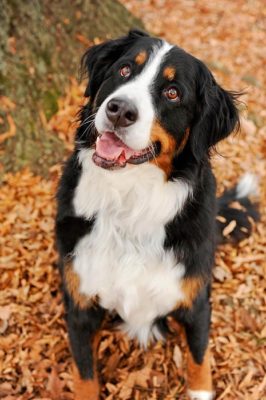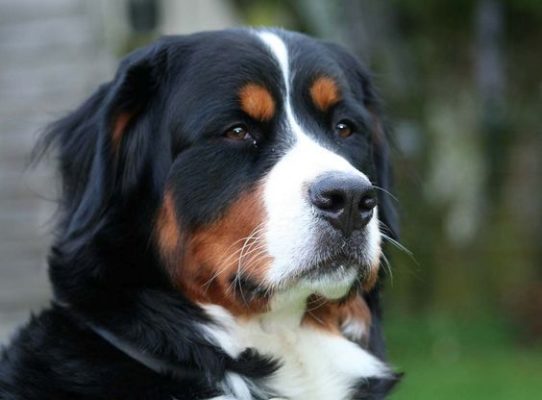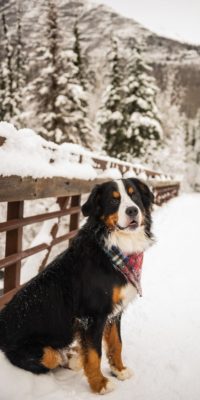Bernese Mountain Dog
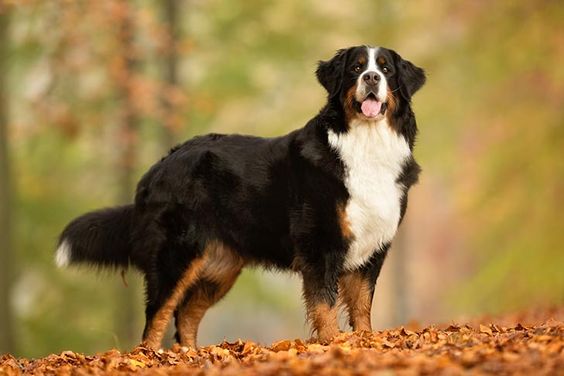
Originally, Bernese Mountain Dogs were raised as workers; they can easily perform any task, in a state of idleness, their character deteriorates. A balanced, calm character makes the pet a real favorite of children and adults. They are obedient, cheerful, and easy to learn new things.
Table of Contents
Breed Information
| Another Name | Berner Sennenhund, Bernese Cattle Dog, Bouvier Bernois |
| Origin | Switzerland |
| Height | Males 64-70 cm Females 58-66 cm |
| Weight | Males 39-50 kg Females 36-48 kg |
| Fur | Longhair |
| Color | Tri-color (black with red tinges and white markings) |
| Lifespan | 11-14 years |
| FCI Classification | Pinscher and Schnauzer – Molossoid and Swiss Mountain and Cattledogs |
| Group | Watchdogs, guard dogs, dogs for protection |
| Price | $600-1400 |
Breed Photos
Origin History
The birthplace of the breed is Switzerland (near Bern). The Bernese Mountain Dog is descended from the fighting dog of the ancient Romans. In its homeland, it was first used to protect herds: it helped keep animals together and, if necessary, move them from pasture to other areas. The primary habitat of dogs was village farms, which were located in the valleys of the Alps.
Soon the dog participated in a show, and there it was noticed by some breeders. They decided to found a club and breed purebred Bernese Mountain Dogs. Already in 1910, the dog show was attended by 107 Bernese shepherds. Now the breed is trendy in Germany and Switzerland. They are often used as pets, companions.
Appearance
The Bernese Mountain Dog has a long coat of three colors – the primary color is black with red tinges and white markings. The dog has an average height, a harmonious build, strong paws.
The cheeks, legs, and chest are usually red. The tip of the tail, paws, and muzzle are white. The coat may be slightly wavy but most often straight.
Males can reach 70 cm, females 66 cm. The weight in dogs ranges from 36 to 50 kg. Dogs are very appreciated for their “smile”, because, in a relaxed position of the muscles on the muzzle, the mouth’s opening creates the illusion that the Bernese Mountain Dog is smiling.
The ears are medium, triangular, high. The scruff of the neck is characteristically pronounced. The tail of the pet is fluffy, wide, tapering towards the end. In sunlight, the coat of the Bernese Mountain Dog is shiny.
Character
Originally, Bernese Mountain Dogs were raised as workers; they can easily perform any task, in a state of idleness, their character deteriorates. A balanced, calm character makes the pet a real favorite of children and adults. They are obedient, cheerful, and easy to learn new things.
Distrustful of strangers, always ready to stand up for their own and protect the territory. For other animals in the house, the dog will be a faithful guardian and leader. They are always trying to please their owner because they love praise and affection.
You should always have a few favorite toys for your pet because he will be eager to play, even as an adult. The Bernese Mountain Dog takes a long time to mature, so you have to remember that it is still a puppy in the first years of life. Even if he has a large size.
Care
The dog will be very cramped in the apartment, so it is best to get him when you have a private house with the free territory. The Bernese shepherd dog has a hard time with the heat because of its long and thick fur. It is vital to make sure that the enclosure is in the shade so the dog can always rest in the summertime.
It is important to remember to keep your pet’s access to clean water at all times. Make sure there is always a bowl of water in the same place. While your dog is growing up, it is crucial to take him outside frequently, where he will see other people and animals. This promotes socialization, and your dog will not be aggressive toward others in the future.
The puppy should tiptoe without active exertion because, in that period, the bones and joints are formed. The dog’s hair should be brushed every other day with a special brush; during the molting period, the procedure should be performed every day.
Training
From an early age, it is vital to teaching simple commands such as “boo,” “sit,” and “don’t. It is best to give the dog some treats, praise, and petting after successful training. After all, they need to get their master’s approval, which motivates them like nothing else.
When training, you need to be patient because Bernese Mountain Dog is a bit stubborn and not very eager to learn. It is more important to play for him, so it is best to train in such a way that in the form of play to convey information.
Common Diseases
In general, dogs have good health and a robust immune system. It is important to make sure from childhood that the puppy has no problems with exertion because the joints’ condition in the future depends on it. Improper care of the coat can lead to dermatological diseases.
Nutrition
Puppies need to be fed about four times a day. For an adult dog, two is enough. Do not give milk; it is better to replace it with kefir, cottage cheese. An adult dog should eat many meat, by-products, fish (without bones), cereals, vegetables. Several times a week, you can add an egg to the diet.
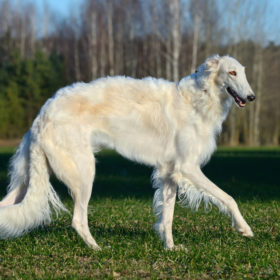 Borzoi
Borzoi Schwyz Hound
Schwyz Hound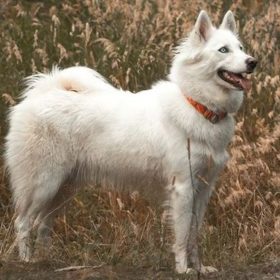 Yakutian Laika
Yakutian Laika Large Münsterländer
Large Münsterländer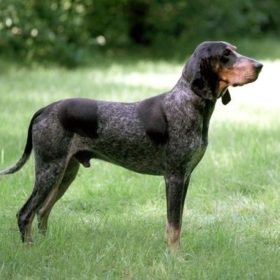 Lucerne Hound
Lucerne Hound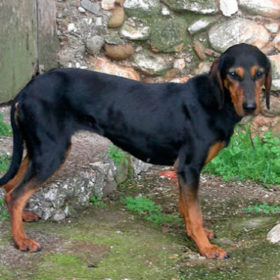 Greek Harehound
Greek Harehound